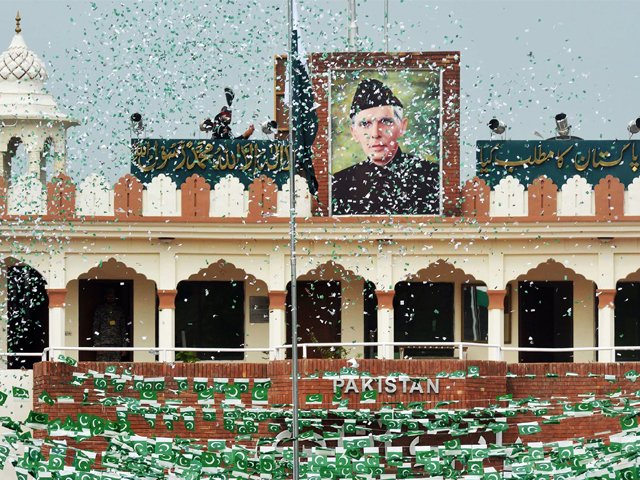
The women of Kalash are a tale of colours, simplicity and struggle
I got a chance to see another side of these women who are otherwise known for their rich culture and beaming beauty.
Traveling is like an escape from the usual hustle bustle of the urban life. But this escape turns into an experience if you witness a culture very different from your own. We all have a lot of pre-conceived notions about every person we meet, every place we visit and every set of beliefs we encounter, but to look beyond these preconceptions is the essence of what traveling is all about.


This sheer thought has provoked me to explore the world, beyond the realms of prejudices and artificiality. I’m not a photographer; rather I just try to capture this reality through my camera and try to share these moments with the world.
Last month, this difference of reality versus perception was reinforced during my trip to witness the beautiful Chilam Joshi festival celebrated every year by the Kalash tribe.
This journey involved a visit to many small villages like Bumboret, Rumbur and Burir, around four hours from Chitral valley. I had already heard and read about the natural beauty of the Kalasha people. The women of Kalash are famous for their impeccable features, glowing complexions, and flawless skins. And I thought this was my opportunity to witness this gorgeousness and capture a few faces with my camera. However, contrary to the popular glamorous clichés, I encountered tales of struggle to maintain a bare minimum lifestyle coupled with inspirational valour and ambitions.



The journey started from the beautiful Lowari top, the peak stop on our way to Chitral. The view was breath-taking and overshadowed all the misery of the rugged roads, landslides and torrential rains we had faced earlier. After absorbing these beautiful cloud-studded mountains, we further travelled around three to four hours to reach the lush green mountains of Bumboret village, the home of the Kalasha people.
We had two days before the festival and this was my chance to interact with the local community. To avail this opportunity, I went to visit nearby homes within those mountains and fortunately had an opportunity to meet many Kalasha men and women, understand their culture, and listen to the struggles they have to go through.
I started by taking a few candid shots of Kalasha children playing and running around the roads in Bumboret village. Most of the kids covered their faces or hid behind a car to avoid photographs. I was already perplexed about their hesitance when one of the kids shouted at me,
“Paise deti nahi, photo leleti!”
(She takes pictures without giving money)
I was shocked at how informed these little kids were about the importance of their outfits for photography enthusiasts.



My next step was to meet some of the women and take a look at their homes. Upon peeking through my window, I captured a lady busy weaving a beautiful Kalasha outfit. She noticed me looking at her and called me inside. Soon her whole family was around me and showing me and my friends a variety of necklaces and dresses which were for sale.




After discussing their culture for a good few minutes, she opened up her heart to me and I got to know that most of these women were running their homes and earning their livelihoods without even basic necessities like water, electricity, education, and job opportunities.
Despite these harsh realities, these graceful ladies had learnt to speak fluent Urdu and some were even fluent in English. They not only followed their traditions but also knew the importance of education and had placed their children, including females, in nearby cities for higher education.

Higher education came at a higher price, with no money for basic necessities. These women had to make difficult choices in order to keep their homes running. My previous shock over the children asking money for a photograph suddenly dissipated. All I felt now was despair and hope.
Despair because thousands of tourists and photographers visited the tribe’s festival every year but nothing remarkable was done to provide them with a better lifestyle, but I was still hopeful because they knew the importance of education and that’s one factor that can definitely improve the state of affairs for their coming generations.
As Allama Iqbal said,
“Nahin hai na umeed Iqbal apne kasht-e-weeran se,
Zara num ho toh ye mitti bohat zerkhaiz hai saaqi.”
(Iqbal is very hopeful from this deserted nation, a little enlightenment and they’re better than the rest.)

My next stop was Rumbur, where the festival was to be held. This festival was the most colourful extravaganza I had ever seen in my life.







Women of all ages were dancing around with a particular foot movement, while a selected few were singing local songs in golden dresses. Amidst this festivity, I met a group of four to five teenagers who had just arrived from Chitral to join their families for the festival. One of the girls was named Nazi; she was student of grade nine and an extremely graceful and well-spoken girl. When I asked her about her dreams and aspirations, she smiled with a glimmer in her eyes and said,
“Main cricketer banungi!”
(I’ll become a cricketer one day!)
Stunned and pleasantly surprised, I asked,
“Chitral ki koi national cricket team hai?”
(Is there a national cricket team from Chitral?)
And the reply was furthermore surprising,
“Nahi hai, main banaungi!”
(No, I’ll make one!)
Her confidence and ambitious approach was actually awe inspiring.




However, majority of these women had lost what we all were looking forward to. Yes, they had lost their pristine complexion and unblemished skin in the process of earning a respectable life for their children. Young girls were astoundingly pretty and as my lens moved from teens to adults, the skin transformed from glowing to tan and then rugged to rough. These women didn’t live the ‘dream lives’ we imagine they do between these magnanimous mountains, instead they had to put up with a lot of societal, financial, and psychological pressures through the course of their lives.





I felt fortunate that I got a chance to see another side of these women who are otherwise just known for their rich culture and beaming beauty. Their courage to earn their livelihood, despite of all the odds they’re faced with, their attitude towards education was indeed commendable.

Their positivity, enlightened mind-set, and audacious personalities have a lesson for each and every one of us, a message to ponder over our own complacent attitude towards life. Despite of all the opportunities, we’re still thankless and with all odds against happiness, they’re still optimistic.
Chitral valley was everything I imagined, a beautiful valley with even more stunning personalities.
All photos: Anam Saeed



COMMENTS (46)
Comments are moderated and generally will be posted if they are on-topic and not abusive.
For more information, please see our Comments FAQ